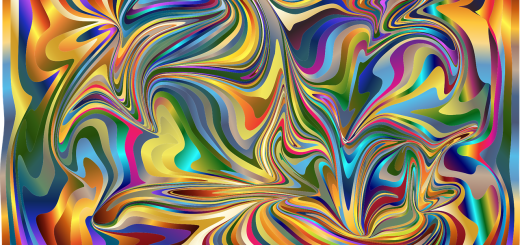Understanding the Afterlife in Norse Mythology: Ragnarok

Before diving in, please note: This post is for informational purposes only. If you’d like to know more about how we approach topics, feel free to check out our friendly Disclaimer Page.
Hey there, amazing readers! 🖐️ Just a quick note: yes, we know there are a lot of ads here. Trust us, we get it—it’s not the prettiest look, but they help us keep this blog alive and kicking. Those pesky little ads cover the costs of all the behind-the-scenes magic, from hosting and tech stuff to creating content we hope you’ll love.
We’re committed to delivering quality posts, and your support (even just sticking around despite the ads) means everything to us. So, bear with us, and thanks for helping us keep the good vibes rolling. Now, on to the fun stuff! 😉
TRANSLATE BUTTON AT THE END OF THE ARTICLE
Introduction to Norse Mythology
Norse mythology, the collection of myths and legends originating from the pre-Christian religion of the Scandinavian people, offers a rich tapestry of stories that delve into the supernatural realms of gods, giants, and mythical creatures.
These tales, passed down through generations, provide insight into the beliefs and values of ancient Norse society.
At the core of Norse mythology is the idea of a vast cosmos inhabited by powerful deities who shape the world and influence the lives of mortals.
Central to this belief system is the concept of the afterlife, where individuals are destined to go after death based on their actions in life.
The Concept of the Afterlife
In Norse mythology, the afterlife is not a singular realm but rather a complex network of different worlds that cater to various beings based on their deeds and affiliations.
The most well-known afterlife destinations are Valhalla, the hall of fallen warriors ruled by Odin, and Helheim, the realm of the dead governed by the goddess Hel.
These realms represent contrasting fates for individuals, with Valhalla offering eternal glory and feasting for those who die bravely in battle, while Helheim provides a more somber existence for those who pass away from illness or old age.
What is Ragnarok?
Ragnarok, often referred to as the "Twilight of the Gods," is the apocalyptic event in Norse mythology that marks the end of the current world order.
This cataclysmic event entails a series of disasters and battles that result in the destruction of the gods, the world, and many of its inhabitants.
Ragnarok is prophesied to be initiated by a series of omens and portents, signaling the impending doom of all creation.
Despite its bleak nature, Ragnarok is not viewed as a final ending but rather a necessary step in the cycle of death and rebirth that underpins Norse beliefs.
The Role of Ragnarok in Norse Beliefs
Ragnarok serves a crucial role in Norse mythology as it embodies the cyclical nature of existence.
The concept of destruction and renewal is fundamental to the Norse worldview, emphasizing the interconnectedness of life, death, and rebirth.
By portraying the gods as vulnerable beings subject to fate, Ragnarok highlights the impermanence of power and the inevitability of change.
In this sense, Ragnarok is not merely a tale of doom but a reflection of the eternal struggle between order and chaos, creation and destruction.
Understanding the End Times
The events leading up to Ragnarok are marked by escalating conflicts and upheavals that set the stage for the final confrontation between the forces of good and evil.
According to Norse mythology, the world will be thrown into chaos as the boundaries between different realms break down, leading to widespread destruction and suffering.
As the forces of darkness gather strength, the gods prepare for the ultimate battle that will determine the fate of the cosmos.
This period of turmoil and uncertainty symbolizes the end times, a period of reckoning and transformation that precedes the dawn of a new era.
The Fate of the Gods and Mortals
During Ragnarok, many of the major gods and goddesses of the Norse pantheon are destined to perish in the final battle against their enemies.
Odin, the Allfather, is foretold to be slain by the wolf Fenrir, while Thor, the god of thunder, will meet his end in combat with the world serpent Jormungandr.
Despite their impending doom, the gods face their fate with courage and resolve, knowing that their sacrifices are necessary to ensure the survival of the cosmos.
Mortals are also caught up in the chaos of Ragnarok, with the virtuous souls being granted entry to the reborn world, while the wicked are consigned to eternal damnation.
Mythological Events Leading to Ragnarok
Several key events in Norse mythology foreshadow the coming of Ragnarok and set the stage for the final battle between the forces of order and chaos.
The binding of the wolf Fenrir, the breaking of the Bifröst bridge, and the release of the fire giant Surtr are all seen as harbingers of the end times.
Loki, the trickster god, plays a pivotal role in instigating the events that lead to Ragnarok, sowing discord and betrayal among the gods.
As the forces of darkness gather strength and the world descends into chaos, the stage is set for the climactic showdown that will determine the fate of the universe.
Symbolism and Significance of Ragnarok
Ragnarok is laden with symbolism and meaning, representing not only the end of the world but also the promise of renewal and rebirth.
The destruction wrought by Ragnarok is seen as a necessary step in the cycle of creation and destruction that governs the cosmos.
The image of the world consumed by fire and water symbolizes the cleansing power of destruction, paving the way for a new beginning.
In this sense, Ragnarok is not a hopeless apocalypse but a transformative event that paves the way for a brighter future.
Aftermath of Ragnarok
After the dust settles and the fires of Ragnarok have burned themselves out, a new world emerges from the ashes, reshaped and renewed.
The surviving gods and mortals come together to rebuild the world, forging a new order out of the chaos of the old.
The cycle of life, death, and rebirth continues unabated, with the promise of a better future beckoning on the horizon.
The sacrifices made during Ragnarok are not in vain, as they pave the way for a world free from the taint of evil and corruption.
The New World Order in Norse Mythology
The new world that arises after Ragnarok is a realm of peace and harmony, where the gods and mortals coexist in balance and mutual respect.
The surviving deities gather in council to establish laws and traditions that will govern the cosmos in the post-Ragnarok era.
The bonds of kinship and friendship forged during the final battle endure, laying the foundation for a society based on cooperation and solidarity.
The new world order reflects the lessons learned from the cataclysm of Ragnarok, emphasizing the importance of unity and shared purpose in the face of adversity.
Comparisons to Other Apocalyptic Beliefs
While Ragnarok shares similarities with other apocalyptic beliefs, such as the Christian concept of the end times, it stands out for its emphasis on cyclical rather than linear time.
Unlike the linear progression of history toward a final judgment, Ragnarok portrays a continuous cycle of death and rebirth that shapes the cosmos.
This cyclical view of time reflects the Norse belief in the eternal struggle between order and chaos, creation and destruction.
By contrast, many other apocalyptic beliefs focus on a singular event that marks the definitive end of the world, with little room for renewal or regeneration.
Modern Interpretations of Ragnarok
In modern times, Ragnarok has captured the imagination of writers, artists, and scholars seeking to explore its relevance to contemporary issues.
The themes of destruction, renewal, and transformation found in Ragnarok resonate with audiences looking for meaning in a world beset by crisis and uncertainty.
Some interpret Ragnarok as a metaphor for environmental catastrophe or social upheaval, highlighting the need for collective action and solidarity in the face of global challenges.
Others see Ragnarok as a cautionary tale about the dangers of unchecked power and hubris, warning against the consequences of greed and avarice.
Conclusion
In conclusion, the concept of Ragnarok in Norse mythology offers a compelling narrative of the end times that is rich in symbolism and meaning.
This apocalyptic event serves as a reminder of the cyclical nature of existence, where destruction and renewal are intertwined in an eternal dance.
By exploring the events leading up to Ragnarok, the fate of the gods and mortals, and the aftermath of this cataclysmic event, we gain insight into the values and beliefs of ancient Norse society.
As we reflect on the significance of Ragnarok in the context of modern interpretations and comparisons to other apocalyptic beliefs, we are reminded of the enduring power of myth to illuminate the human experience and inspire us to face the challenges of our own time with courage and resilience.

The Enlightenment Journey is a remarkable collection of writings authored by a distinguished group of experts in the fields of spirituality, new age, and esoteric knowledge.
This anthology features a diverse assembly of well-experienced authors who bring their profound insights and credible perspectives to the forefront.
Each contributor possesses a wealth of knowledge and wisdom, making them authorities in their respective domains.
Together, they offer readers a transformative journey into the realms of spiritual growth, self-discovery, and esoteric enlightenment.
The Enlightenment Journey is a testament to the collective expertise of these luminaries, providing readers with a rich tapestry of ideas and information to illuminate their spiritual path.
Our Diverse Expertise 🌟
While our primary focus is on spirituality and esotericism, we are equally passionate about exploring a wide range of other topics and niches 🌍📚. Our experienced team is dedicated to delivering high-quality, informative content across various subjects ✨.
To ensure we provide the most accurate and valuable insights, we collaborate with trusted experts in their respective domains 🧑🏫👩🏫. This allows us to offer well-rounded perspectives and knowledge to our readers.
Our blog originally focused on spirituality and metaphysics, but we’ve since expanded to cover a wide range of niches. Don’t worry—we continue to publish a lot of articles on spirituality! Frequently visit our blog to explore our diverse content and stay tuned for more insightful reads.





